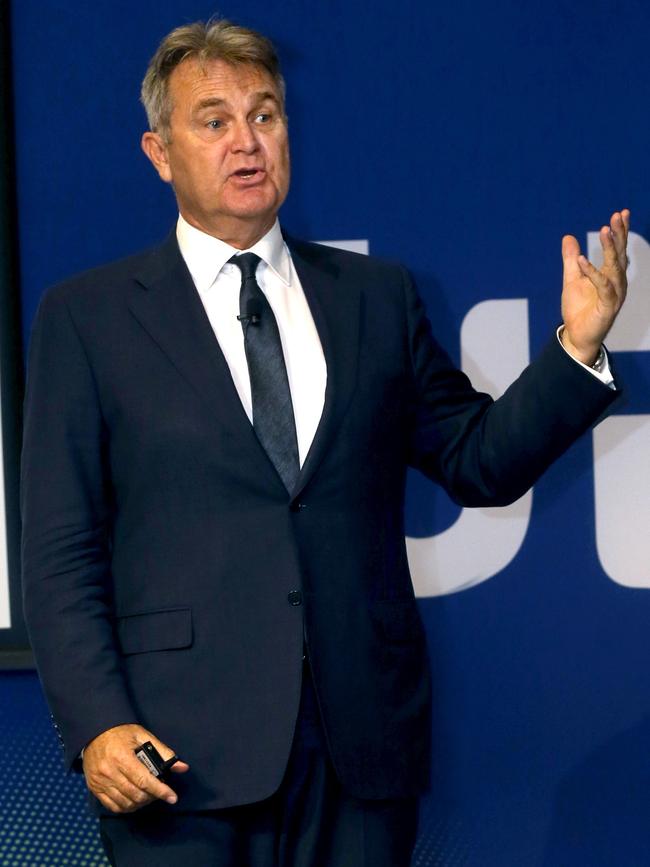NSW students to be taught new languages like Hindi and Persian
For years, languages like German, French and Italian have been taught in NSW schools. But now, other languages such as Hindi, Macedonian and Persian will be added to the curriculum from next year to reflect our multicultural state.
In a further sign of how Sydney is truly a global city, all children from Kindergarten to Year 12 will be able to study Hindi, Macedonian, Persian, Punjabi and Tamil from next year.
Until now, only students at schools where a large proportion of parents and grandparents speak these languages have been taught those classes.
Even then, teachers who could prove they were fluent in “community languages” had to cobble together their own lesson plans because there wasn’t a formal syllabus.
That will all change from next year, when Hindi, Macedonian, Persian, Punjabi and Tamil will be options alongside traditional language courses such as German, French and Italian.

MORE FROM JACK MORPHET:
11,000 new homes, shops to be built along Metro line
Inside Sydney Zoo: First animals find new home
Demographer Bernard Salt said it was a reflection of Sydney being “one of the world’s greatest multicultural cities”.
“Australians should be really good at mining, agribusiness, surfing and really good at languages because more so than any other developed nation on earth, we absorb people from different cultures, and particularly in Sydney,” Mr Salt said.
“No doubt one of Sydney’s strengths should be linguistic skills because 39 per cent of Sydney residents were born outside Australia.

“Thirty-nine per cent is a high figure by global standards.
“New York is the great melting pot but only 29 per cent of its residents were born outside America.
“The percentage of people in Paris born outside France is 22 per cent. The percentage of people in Berlin born outside Germany is 13 per cent. The percentage of people in Tokyo born outside Japan is 2 per cent. The percentage of people in Shanghai born outside China is less than 1 per cent.
“The only places I can find with a higher proportion than Sydney are places like Dubai where you have guest workers but Sydney’s overseas residents are immigrants with the same sovereign rights as locals.”
Mr Salt said Australian immigration had begun as Anglo-Celtic then, after World War II it became Italians, Greeks and Baltics, then Asians led by Vietnamese throughout the late 1970s and 1980s and in the 21st century Chinese and Indians then, more recently, from Arabic and Persian-speaking nations.
It is easy to see that multicultural city at schools such as Girraween Public in Western Sydney.
The overwhelming majority (94%) don’t speak English at home. Or, to put it another way, about 75 students speak English at home at a school with 1250 students.
The kids at Girraween Public School mainly speak Tamil and Hindi at home, which is why the school has been running Tamil and Hindi classes for the past four years.
Girraween Public School Tamil teacher Premala Nadesan said the majority of her students speak the language at home but need lessons to develop it further.
“The students speak the language at home but they don’t know words like ‘library’ or ‘school hall’,” Ms Nadesan said.
“Teaching the kids helps parents and grandparents who aren’t fluent in English to understand things like school newsletters.”
Ms Nadesan and the other “community language” teachers at Girraween Public School helped draft the Tamil and Hindi syllabuses after four years of fumbling their way through classes using trial and error.
“We had a general language teaching framework but it wasn’t specific to any language and didn’t have anything about culture or examples of how to teach the subject,” Ms Nadesan said.
“We’ve worked it out now and we’re seeing the kids are really engaging.”
Like other language courses taught in NSW schools, the syllabus will focus on practical skills such as booking a hotel room or making conversation on a bus.
“With millions of people speaking a language other than English at home, it is so important for children to formally have the opportunity to learn about where they have come from, and pass that information on for generations to come,” Education Minister Sarah Mitchell said.
“It’s also crucial for children to learn about the other cultures and languages that make NSW such an incredible, diverse state.”
Other “community languages” being taught informally at schools include Assyrian, Bengali, Khmer, Maori, Nepali, Samoan, Serbian, Tongan and Urdu.

